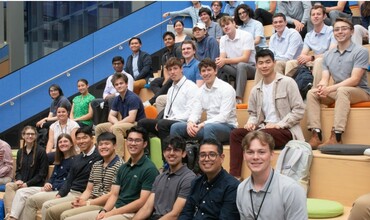The Draper Scholars Program emphasizes empowering students in 14 key research areas to make the greatest impact. We encourage applicants to align their research with these topics.
Artificial Intelligence and Machine Learning
Draper uses Artificial Intelligence and Machine Learning to provide critical capabilities to our advanced systems in the national security, biosecurity, space, and military domains; however, an overarching challenge of developing new ML models in these domains is sparse, irregular, non-representative, or incomplete training data sets. Another challenge is building calibrated trust between the AI systems and users to prevent critical errors and increase adoptability into operations. Draper seeks methods to advance the state of the art in this field.
We are typically interested in PhD candidates for the development of novel approaches and MS candidates for the application of existing approaches to solving open problems-of-interest to Draper.
Operational AI leveraging ML from imperfect data sets
Training successful ML algorithms, especially deep learning models, requires large, comprehensive data sets that are similar to those collected in operation use conditions. In many of our domains of interest it is not feasible to generate large sets of training data because there are historically few examples or the events of interest are infrequent or unique. Additionally, many missions are extremely fast paced with high levels of uncertainty. Deployed AI systems with ML models must be trusted to operate in way that increases accuracy or efficiency without introducing unnecessary burden to the user or causing critical failures.
Technical Point of Contact
Research Interests
Advanced Autonomy
-
- Collaborative control, tasking, navigation, or decision making
- Scene understanding and analysis, including multi-sensor integration, object persistence, contextual reasoning, and threat characterization
- Mission planning, mission management, and decision support
- ML models that enable self-assessments of performance in areas such as uncertainty, data quality, or reliability
- Hybrid AI systems that can integrate ML models with expert systems
Digital Signal AI
-
- Cognitive electronic warfare
- Cybersecurity
- Finding signals in noisy data
Biosecurity
-
- Chemical, biological, radiation, and nuclear event prediction, detection, and mitigation
- Pandemic detection and response
- Multi-omic analyses for drug discovery or personalized treatment
AI-enabled Design and Manufacturing
-
- Photonics gratings for miniaturized LIDAR
- Semiconductors or microelectronics
- Electromechanical systems
- Validation and verification
Have Any Questions?
To learn more or stay up to date with our key areas, please fill out the below contact form.

